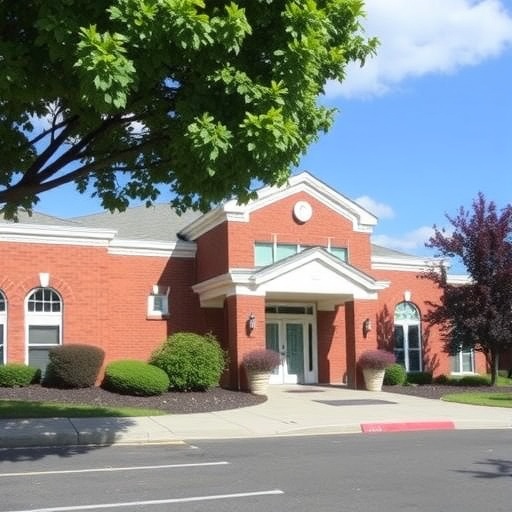In the evolving landscape of reproductive healthcare in the United States, recent research sheds light on the profound impact of abortion restrictions on healthcare providers themselves. A compelling new survey study, published in JAMA Network Open, explores how legislative changes following the landmark Dobbs decision have influenced the geographic distribution of abortion providers across the country. This analysis reveals critical patterns of relocation among clinicians, fundamentally altering the availability and accessibility of abortion services nationwide.
Following the Dobbs ruling, which effectively overturned federal protection for abortion rights and enabled states to impose stringent bans, the study finds that approximately 42% of clinicians who provided abortions in states with newly enacted abortion prohibitions have chosen to relocate. This phenomenon underscores a direct professional repercussion of legal restrictions, as healthcare providers seek more supportive environments to continue their practice. The magnitude of relocation illustrates how policy-driven barriers not only impact patient access but also significantly disrupt the workforce dedicated to reproductive services.
Geospatial redistribution was particularly pronounced, with virtually all clinicians relocating from restrictive states moving to states where abortion remains legal. This migration pattern highlights a pronounced northward and westward movement towards states with liberal abortion policies, thereby exacerbating regional disparities in reproductive healthcare access. The research emphasizes that such professional displacements could intensify abortion deserts—regions where access to abortion services becomes critically limited or completely unavailable.
Critically, these relocation trends bear not only statistical but also clinical significance. Clinicians abandoning states with bans do so to maintain professional autonomy and to provide essential healthcare in accordance with prevailing medical standards. The exodus of providers may further strain already limited resources in non-restrictive states, as increased patient volume from previously restricted areas converges with local service demand. This imbalance threatens to overwhelm clinics, potentially elongating wait times and complicating patient care coordination.
The survey methodology employed in this study gathered data from a diverse cohort of abortion providers across various policy contexts, carefully stratifying respondents by their state’s legislative environment before and after Dobbs. This approach permits nuanced comparisons that illuminate how jurisprudential shifts cascade into tangible workforce migrations. Such detailed data capture facilitates a more precise understanding of the interplay between law, healthcare workforce mobility, and access disparities.
Furthermore, the study situates these findings within the broader sociopolitical climate, where abortion debates intertwine with issues of healthcare equity, professional ethics, and state sovereignty. The relocation of abortion clinicians compounds the challenges faced by vulnerable populations, who are often least able to overcome barriers such as transportation, financial constraints, and stigma. Consequently, this workforce migration feeds into structural inequities, disproportionately affecting marginalized communities who rely on local abortion services.
Beyond the immediate scope of provider relocation, the research offers a prescient reflection on the adaptability and resilience of clinicians committed to reproductive health. While some practitioners relocate to navigate legal constraints, others may abandon abortion provision altogether, either transitioning to different specialties or reducing procedural offerings within their current practices. The survey implicitly captures this spectrum of responses, underscoring the multifaceted nature of provider decisions amid restrictive legal environments.
From a policy perspective, these findings demand urgent attention as they reveal unintended consequences of abortion restrictions. Lawmakers and public health officials must reckon not only with the ethical dimensions of access but also with pragmatic issues surrounding clinician retention and recruitment. Strategic investments in supportive infrastructure, legal protections, and provider networks will be crucial to mitigating workforce attrition and preventing service deserts in vulnerable regions.
Academic and medical communities are also called to action, as this study stresses the importance of advocacy and support for colleagues facing legal and professional jeopardy. Professional societies, institutional leaders, and training programs must innovate methods to bolster retention of abortion providers, including offering legal assistance, mental health services, and continuing education opportunities tailored to navigating politically volatile environments.
The ramifications of clinician relocation extend into medical education and workforce planning. As training programs situated in states with restrictive abortion laws face shrinking provider pipelines, future generations of clinicians may have less exposure to abortion care, further compounding service deficits. The study’s implications therefore resonate beyond immediate clinical settings, implicating the long-term sustainability of abortion service provision nationwide.
In sum, this rigorous survey study presents a stark indicator of how abortion bans reverberate through the healthcare ecosystem, impinging upon providers’ practices and, by extension, patient access to essential reproductive services. By quantifying the extent and direction of clinician relocation post-Dobbs, the research brings into sharp focus the interconnectedness of law, medicine, and mobility. Stakeholders at every level must consider these dynamics as the United States continues to navigate a highly polarized reproductive healthcare landscape.
It is clear from these findings that legal environments shape not only policy debates but also the very fabric of healthcare delivery. Clinicians’ choices to relocate underscore a professional commitment to uphold standards of care, even as the legal terrain shifts beneath their feet. This dynamic calls for comprehensive, data-informed strategies to safeguard the accessibility and quality of abortion services in an era of unprecedented legal challenges.
Subject of Research: Impact of abortion legislation post-Dobbs on clinician relocation and abortion service accessibility.
Article Title: Not specified in the provided content.
Web References: Not specified in the provided content.
References: DOI: 10.1001/jamanetworkopen.2025.14884
Image Credits: Not specified.
Keywords: Abortion; Legislation; State law; Obstetrics; Reproductive healthcare; Healthcare workforce; Clinician relocation




